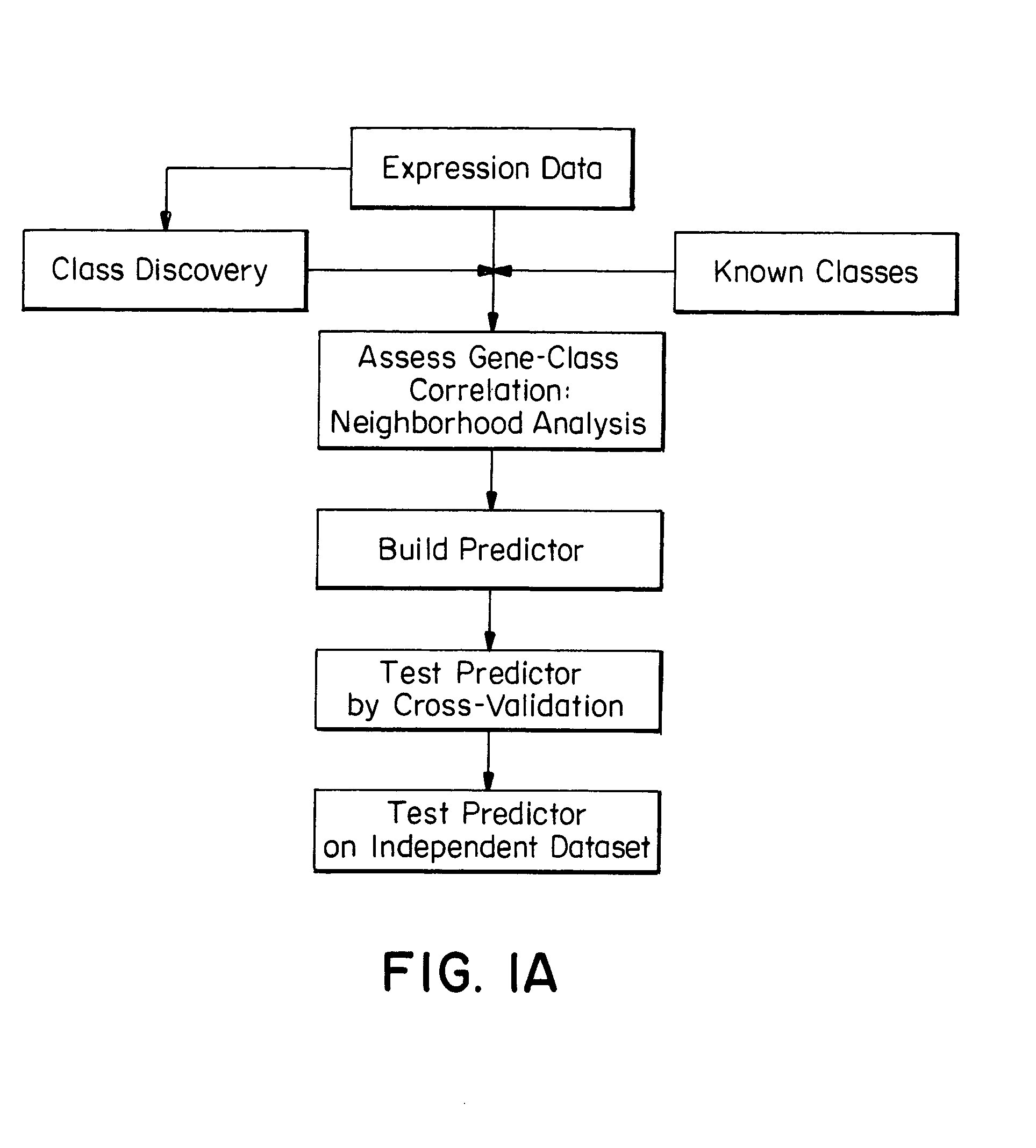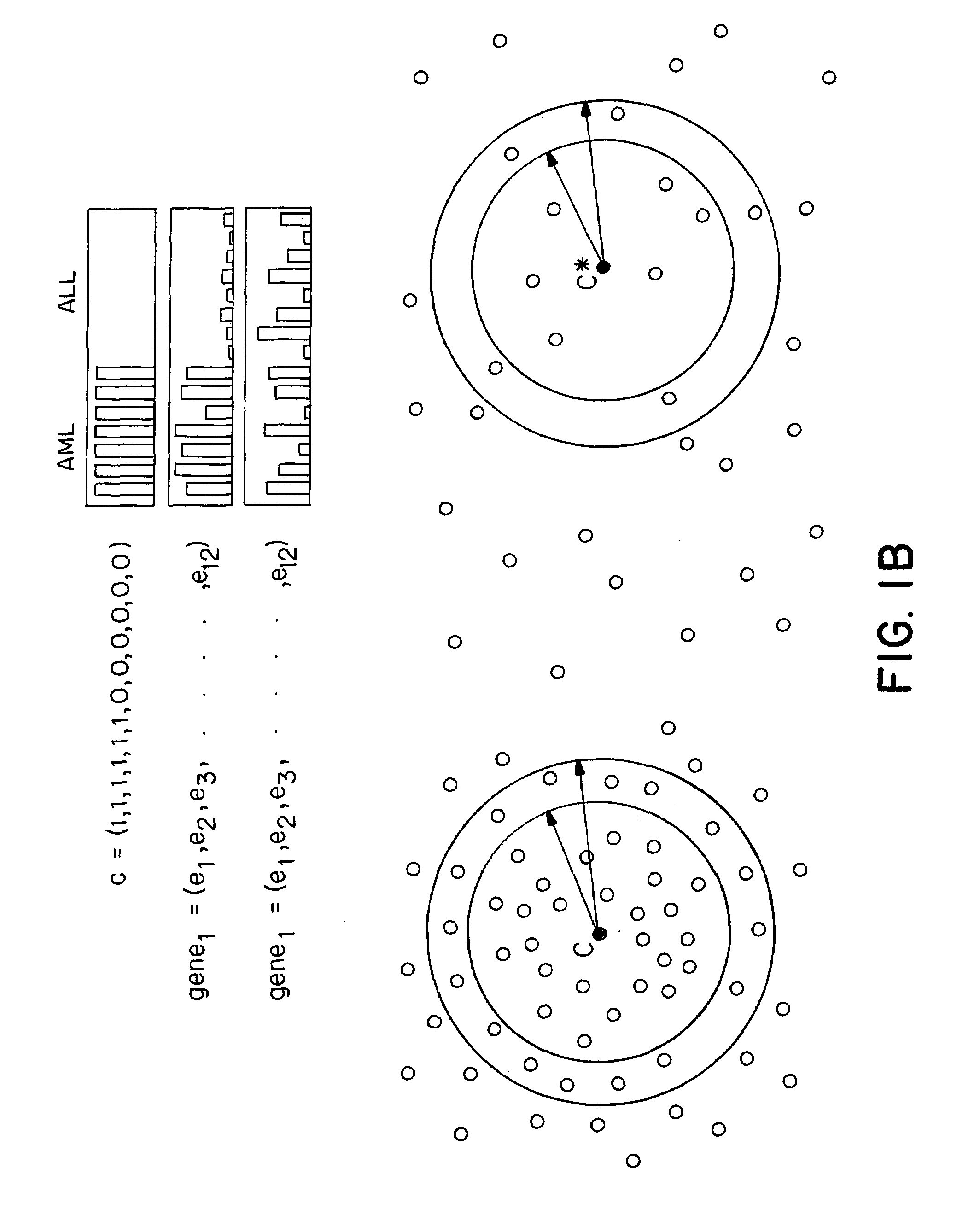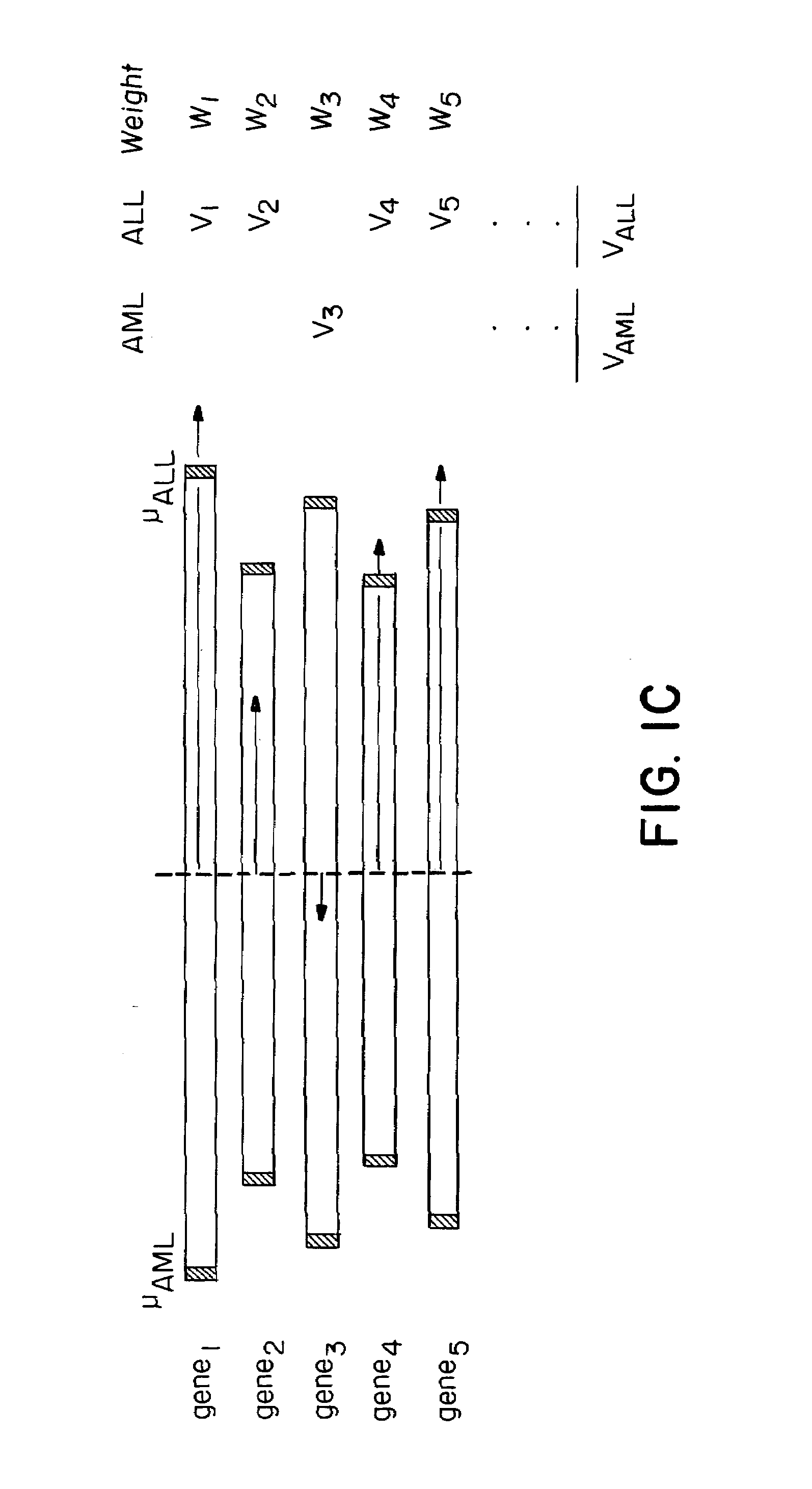Methods for predicting chemosensitivity or chemoresistance
a chemosensitivity or chemoresistance technology, applied in the field of methods for predicting chemosensitivity or chemoresistance, can solve the problems of inability to accurately predict the effect of a particular disease class, inconvenient diagnosis, and inability to accurately diagnose the patient,
- Summary
- Abstract
- Description
- Claims
- Application Information
AI Technical Summary
Benefits of technology
Problems solved by technology
Method used
Image
Examples
example 1
[0127]The work described herein began with the question of class prediction or how one could use an initial collection of samples belonging to known classes (such as AML and ALL) to create a ‘class predictor’ to classify new, unknown samples. An analytical method (FIG. 1A) was developed and first tested on distinctions that are easily made at the morphological level, such as distinguishing normal kidney from renal cell carcinoma. Six normal kidney biopsies and six kidney tumors (renal cell carcinomas, RCC) were compared using the methods outlined below for the leukemias. Neighborhood analysis showed a high density of genes correlated with the distinction. Class predictors were constructed using 50 genes, and the predictions proved to be 100% accurate in cross-validation. The informative genes more highly expressed in normal kidney compared to RCC included 13 metabolic enzymes, two ion channels, and three isoforms of the heavy metal chelator metallothionein, all of wh...
example 2
Class Discovery
[0156]Class prediction presumes that one already has discovered biologically relevant classes. In fact, the initial identification of cancer classes has been slow, typically evolving through years of hypothesis-driven research. Accordingly, the next question was how such classes could be discovered in the first place.
[0157]Class discovery entails two key issues: finding clusters and evaluating clusters. The first issue concerns algorithms for clustering tumors by gene expression to identify meaningful biological classes. The second, more challenging issue addresses whether putative classes produced by such clustering algorithms are meaningful—that is, whether they reflect true structure in the data rather than simply random aggregation.
[0158]This work began by exploring whether clustering tumors by gene expression readily reveals key classes among acute leukemias. Several mathematical approaches to clustering expression data have been recently reported. (P. T. Spellma...
example 3
Materials and Methods for Classifying a Sample as Chemosensitive or Chemoresistant
[0167]Compound selection: The 60 cell lines were previously assayed for their sensitivity to a variety of compounds as a part of the Developmental Therapeutics Program at the NCI. Briefly, each cell line was exposed to each compound for 48 hours, and growth inhibition was assessed by the sulphorhodamine B assay for cellular protein. The concentration of compound required for 50% growth inhibition was scored as the GI50. For each compound, log10(GI50) values were normalized across the 60 cell lines. Cell lines with log10 (GI50) at least 0.8 standard deviations above the mean were defined as resistant to the compound, whereas those with log10 (GI50) at least 0.8 standard deviations below the mean were defined as sensitive. Cell lines with log10 (GI50) within 0.8 standard deviations of the mean were considered to be intermediate and were eliminated from analysis. Prediction analysis was performed for comp...
PUM
| Property | Measurement | Unit |
|---|---|---|
| threshold | aaaaa | aaaaa |
| resistance | aaaaa | aaaaa |
| weight | aaaaa | aaaaa |
Abstract
Description
Claims
Application Information
 Login to View More
Login to View More - R&D
- Intellectual Property
- Life Sciences
- Materials
- Tech Scout
- Unparalleled Data Quality
- Higher Quality Content
- 60% Fewer Hallucinations
Browse by: Latest US Patents, China's latest patents, Technical Efficacy Thesaurus, Application Domain, Technology Topic, Popular Technical Reports.
© 2025 PatSnap. All rights reserved.Legal|Privacy policy|Modern Slavery Act Transparency Statement|Sitemap|About US| Contact US: help@patsnap.com



